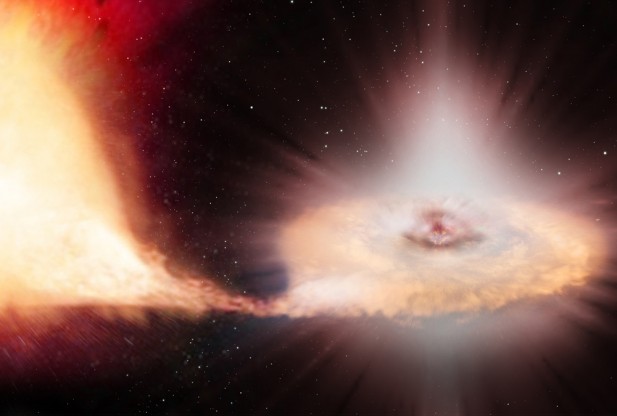
According to the ESA, the supernova was located during a sudden rise in the galaxy's brightness that occurred between two Gaia observations made a month apart. This anomalous spike in light was observed by a team of astronomers during a routine sky survey on August 30, and the supernova was given the name Gaia14aaa.
Since beginning its scientific work on July 25, Gaia has been repeatedly scanning the sky in order to examine a catalogue of nearly one billion stars an average of 70 times over the next five years. Dr. Simon Hodgkin from the Institute of Astronomy in Cambridge explained that there were many benefits to this approach.
"This kind of repeated survey comes in handy for studying the changeable nature of the sky," said Dr. Hodgkin, a member of Gaia's Science Alert Team. "As Gaia goes back to each patch of the sky over and over, we have a chance to spot thousands of 'guest stars' on the celestial tapestry. These transient sources can be signposts to some of the most powerful phenomena in the Universe, like this supernova."
While many astronomical sources are variable, other exhibit regular patterns marked by a periodical brightening and dimming, and still others could undergo changes that are sudden and extremely dramatic. It did not take long for Gaia to detect its first anomaly in the distant galaxy, which was observed twice in a period of just over a month and looked to be far dimmer the first time than it did the second time.
"We immediately thought it might be a supernova, but needed more clues to back up our claim," said Łukasz Wyrzykowski from the Warsaw University Astronomical Observatory, Poland. After all, there are other powerful cosmic phenomena that can be mistaken for a supernova in a distant galaxy, such as the outbursts created by mass-consuming supermassive black holes than can rest at the center of that galaxy.
In Gaia14aaa's case, however, the position of the bright light was somewhat offset from the galaxy's core, which suggested to the researchers that it was probably unrelated to a central black hole. So Dr. Hodgkin and his colleagues further analyzed the light, using Gaia's instruments to split its light to produce a low-resolution spectrum which allowed them to look for signatures of the various chemical elements present in the light source.
"In the spectrum of this source, we could already see the presence of iron and other elements that are known to be found in supernovas," said Nadejda Blagorodnova, a PhD student at the Institute of Astronomy in Cambridge. It broke it down into red and blue light, and the scientists found that the spectrum appeared to be far brighter than the red part, which would have been a supernova.
The scientists had already suspected that the source of the brightness might have been a Type Ia supernova - the explosion of a white dwarf star locked with a companion star in a binary system. While other supernovas result from stars several times more massive than our sun, Type Ia supernovas are what happen when lower-mass stars quietly reach the end of their lifespan, turn into high-density white dwarfs, before reaching critical mass and exploding.
To confirm their findings about this supernova, the Gaia team used additional observations from ground-based telescopes such as the Isaac Newton Telescope (INT) and the robotic Liverpool Telescope on La Palma in Spain's Canary Islands, the ESA said. A high-resolution spectrum obtained on September 3 using the INT confirmed that the explosion corresponded to a Type Ia supernova and also provided an estimate of its distance.



Reader Comments
to our Newsletter